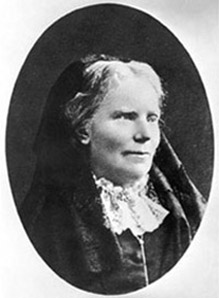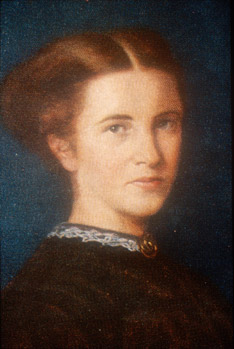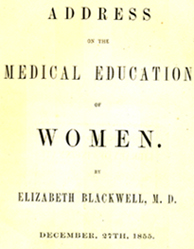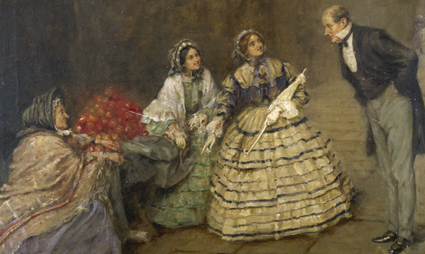| Thematic History | |||||
| Women at Queen Mary Online: a virtual exhibition | |||||
 |
|||||
| In this section: | The woman physician | |||
|
> 1850-1901: > 1902-1913: > 1914-1945: > 1946-1959: > 1960-present: |
||||
Women faced a great struggle to study medicine in the 1850s. The 1858 Medical Registration Act did not say women couldn’t train to be doctors, but London’s medical schools and their students actively tried to prevent women from training. The profession was already overcrowded, and it was argued that women were too intellectually and physically inferior to train as doctors. A few women pioneers made great efforts to break into the medical profession. Elizabeth Blackwell (1821-1910) was the first qualified woman doctor to be listed on the Medical Register in 1859. Elizabeth Garrett Anderson (1836-1917) qualified and was listed on the Medical Register in 1866. The efforts of these women in the face of prejudice proved successful, and they paved the way for future women doctors. They also promoted the idea of medical care for women by women.
She also worked with other women, including Elizabeth Garrett Anderson, to establish medical study for women and promoting medical treatment for women by women. Elizabeth Garrett Anderson was also acquainted with campaigners for Women's Suffrage.
The painting above depicts the presentation of the first suffrage petition by Emily Davies and Elizabeth Garrett Anderson to John Stuart Mill in Westminster Hall. Mill was a supporter of women’s suffrage, and used the petition in parliament to move for the amendment of the 1832 Reform Act, which restricted women’s right to vote. Parliament rejected the petition, but campaigners for women’s suffrage continued their fight. More... |
| << previous | Explore the Thematic History |
|




